The Kumeyaay of southern and Baja California have a rich history of coexistence on the mountainous Mexican border region of San Diego County. Here we republish Florence Shipek’s treatise on the preservation of their sacred mountain called Kuuchamaa, also known as Cuchumá, as well as several videos on their culture, history and stories.
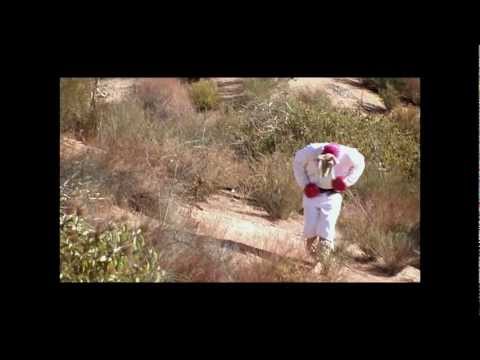
Watch this video on YouTube
Colectivo 1L Presents: “Cuchumá, Imágenes de un Guerrero” Homenaje a la montaña Sagrada – A Collection of “Visions of a Warrior”…A Tribute to the Holy Mountain Called Cuchumá through the Exhibition of the Dance of the Deer.
Kuuchamaa: The Kumeyaay Sacred Mountain
An Excerpt By Florence C. Shipek, Published in Journal of California and Great Basin Anthropology, 7(1) 1985
In southern California, in order to protect Kuuchamaa, the Kumeyaay [Diegueno] religious leaders decided to speak out and describe the importance of the mountain and its relationship to their concepts of the most high God. Previously unrecorded religious beliefs were revealed in order to have the mountain preserved by nomination to the National Register of Historic Places. While the Kumeyaay have been successful in protecting this sacred mountain (and more recently, a second, Table Mountain) they have not been successful in protecting several historic cemeteries from archaeologists and/or developers (Shipek 1983).
Through intensive land use and ethnobotanical studies for the Mission Indian Land Claims Case, I had long been aware that Tecate Peak (about 26 miles from the coast on the southern California – Baja California border) was sacred Kuuchamaa [3], and that even the herbal specialists and surviving curers would not climb the mountain’s slope. I had learned that only those who had been properly initiated as shamans were supposed to go onto the mountain. No one still living had been initiated, but in their youth, most had known individuals who had been initiated and had been on the mountain to participate in ceremonies. All indicated that It was forbidden to speak of the mountain or the beliefs associated with it except on the proper occasions. Death would follow improper discussion of the mountain, of the name of God, or the Spirit of the mountain. Death would also follow improper use of the mountain, or entrance upon the upper slopes and the peak. Indian elders had also commented about how upset they were to look up and see the fire lookout and later the TV relay equipment up there.
STORY: Kumeyaay People: Traditions Survive in Baja California
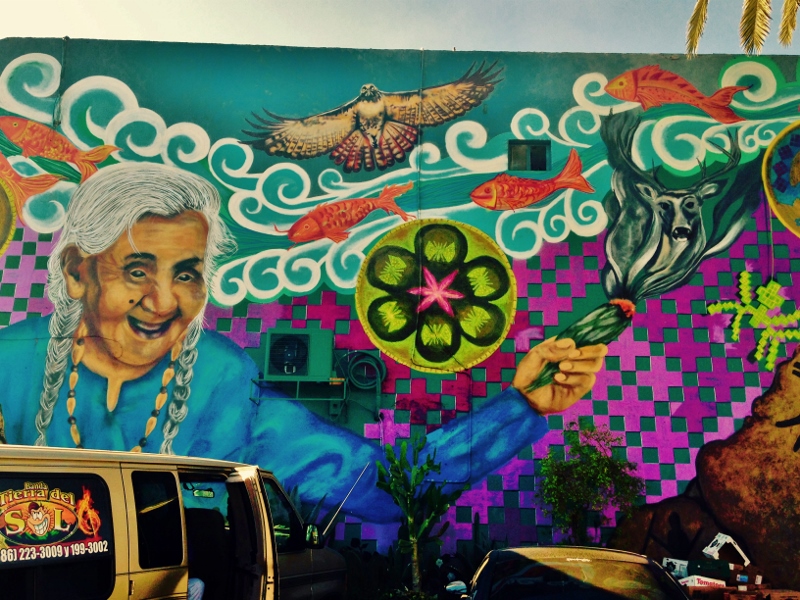

In 1979, while consulting with an environmental-impact firm, one of the religious elders and I simply identified Tecate Peak as sacred and requested that a power-transmission line pass below rather than over the mountain. This brought the sacred nature of the peak to the attention of the BLM. In the fall of 1981, a local church asked the BLM for use of the mountain side as a recreation camp. At that time. BLM officials asked for verification of the sacredness of the peak in order to nominate the mountain as a national historic site and to protect it from further abuse. They wanted to take the elders to the mountain to discuss it and interview them.
The elders debated the propriety of going on the mountain (since they were uninitiated) or of speaking about their religious beliefs concerning the mountain. They concluded that protection of the mountain was paramount and that they must go and tell their beliefs in spite of the injunction to maintain them in secrecy. With BLM officials, two trips to the peak were made by the existing religious elders. Each time, they prayed before entering the mountain. Then, when on the top, they prayed to Kuuchamaa to understand that they had come onto the mountain and were speaking about their religion in order to protect the mountain. They had come in deep reverence, not to violate their beliefs, nor to violate the mountain, nor for personal advantage, but to protect the sacred mountain for the sake of the Kumeyaay and all peoples. During the interview, they repeatedly informed the non-Kumeyaay present that too many people on the mountain for non-religious purposes would destroy the sacred place. They also stated that taking a plant or rock from the mountain would cause the death of the person taking it. Putting something on or near the peak was also forbidden.
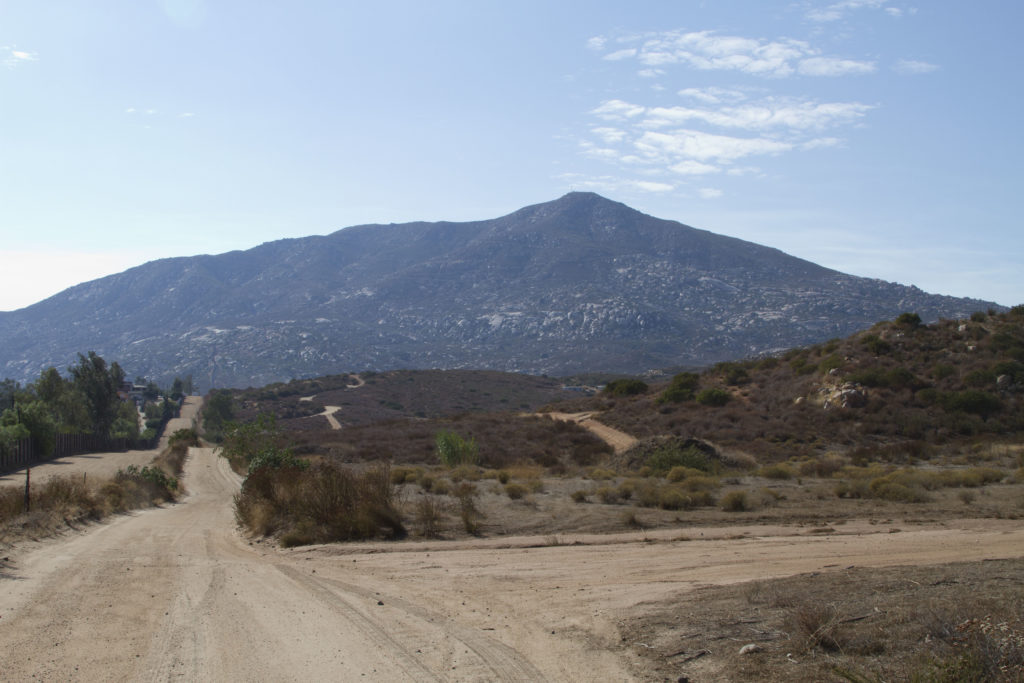
The Kumeyaay creation belief states that when God created the world and humans, the mountain was created as a special place for the home of the spirit of Kuuchamaa. The coming of Kuuchamaa as a man was foretold in the creation legend. When he came as a man, he lived on the south side of the mountain peak. As a man he was a shaman, kuseyaay, having more power, leading and teaching all others. When living, he regularly called all the shamans, both the Kumeyaay kuseyaay and those from all the tribes around, the Kuliway [Luiseño or Payómkawichum and Juaneno], the Cahuilla, Cupeho, Quechan, Cocopa, Paipai, and the Kiliwa. Kuuchamaa taught them all and lectured to them to stop fighting, that they should all live at peace with each other and help each other. He lectured them about all types of proper behavior, and instructed them to cooperate and help each other. He then sent them back to teach their own people. He taught them rituals, that is, singing and dancing which they were to use to train and teach the people peaceful behavior, cooperation, and the helping of one another. But the people did not obey and all the shamans had to be called to the mountain again and again.
STORY: Baja California: An “Earthly Paradise” in the Desert
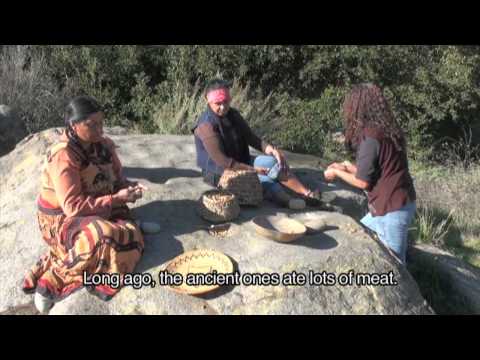
Watch this video on YouTube
Kumeyaay story “Life Under the Oaks” with English Subtitles, Featuring Norma, Jon y Emilia Meza and Lupe Cota. Directed by Michael Wilken-Robertson, Sponsored by the American Indian Studies, San Diego State University.
Kuuchamaa taught the people many things through teaching the shamans on the mountain. He taught them to do a special dance there on the mountain. It was called hollkwii. The elders said that the horloi (Waterman 1910: 296) was a different dance used on different occasions. The shamans are supposed to have danced so much up there one time that they wore a circular rut in the rock on the mountain top.
According to the elders, “One time some shamans of other tribes were jealous of Kuuchamaa’s power and the power of the mountain so they tried to destroy the mountain.” According to the legend, all the kuseyaay held a contest, much like the power contest of Elijah and the prophets of Baal in the Bible (11 Kings). The elders said, “Some, the Kuhway [Luiseño] shamans, sent their power over the mountain and tried to destroy it. They were only able to damage one side of the mountain, leaving a split on the side which is still visible. Then the Kumeyaay shamans sent their power over the Kuhway land and destroyed some of their sacred places, to show everyone that Kuuchamaa was the most powerful. Other shaman contests were held on the mountain-each shaman trying to demonstrate his power for the others.”
Kuuchamaa, himself, was involved in another episode the elders described: “Another time, some shamans from elsewhere brought toloache [Datura] to demonstrate the power acquired in this manner. Some tried it; Kuuchamaa observed. Some of those who tried it began dying. Then Kuuchamaa said this is the wrong way. If we do this, many young men will die. To use this plant, one must fast for five days, consume no food and no water for five days. Some did not believe this and still tried it without fasting. Some fasted but drank water. Many died. Among the Kumeyaay, Kuuchamaa forbade the use of Datura, called it that crazy weed, samay e’nurr. He said that is a false way. Power must be given in one’s dreams, not through the use of that weed.”
Thus, contrary to the belief expressed in the early literature (Kroeber 1925: 742; Waterman 1910) the Datura cult, Chinigchinich (Boscana 1933), was not diffusing to the Kumeyaay under the nose of the missionaries, but had come earlier and had been rejected by their religious leader. The elders stated that, in spite of Kuuchamaa’s warning, in the more recent past, some persons who sought power and were unable to dream properly had begun using Datura to acquire a vision.
https://youtu.be/V7ZevQVtaws
“Kumiai of Baja California” — Video by CELCI on the Kumiai, featuring the late Teodora Cuero on sacred mountain called Cuchama, near Tecate, Baja California (in Spanish)
The mountain was always used by Kumeyaay shamans for acquiring healing power even before the man, Kuuchamaa, lived. It continued to be used after his death. In each generation, only the most powerful and best shaman stayed there and was responsible for regularly calling all shamans to the mountain. In some mystical way the spirit of God and of Kuuchamaa remains inside the mountain calling to individuals with special innate abilities for healing and for good. According to the elders, “Only good power, that is power to help people, could be acquired here. Spiritual songs, healing rituals, and special healing herbal knowledge was taught in dreams on the mountain. All such knowledge came in song, fasting, and dreams given by Kuuchamaa.”
The elders said also that sometimes people who wanted power for evil or selfish purposes came here hoping to acquire strong power. “But to come here with selfish or evil purposes would rebound on that person and make him sick or if he were bad enough, kill him.” According to the elders, “Not just anyone could come to the mountain. Because the mountain had been given to the Kumeyaay, only Kumeyaay people could use it in the search to obtain good power. However, a dream had to be given a Kumeyaay before he/she could come to the mountain. If one is given the dream to come, the dream obeyed. The heart must be pure and one must want to help other people, not oneself. One must want power to help other people; the mountain is not for power over people.”
The elders stated that Kuuchamaa was given four helpers by God, Maayhaay. They were to watch over all and aid him in teaching and maintaining peace and helpful behavior. They reported to him when anyone had done evil. The helpers were to remain on earth after Kuuchamaa’s death in order to watch over all and to report to his spirit. Three of his helpers were the eagle, the red-tailed hawk, and the raven who flew over all and constantly watched all below them on earth in the daytime. The fourth helper was the owl who flew and watched over all at night. While we were with the elders on the mountain top, we saw eagles flying around us. A special flower, sacred to Kuuchamaa, was also seen on the upper mountain slopes [4].


At his death, which he had foretold, Kuuchamaa was cremated on the top of the mountain and his ashes interred in a hidden place according to the instructions he had given. He had also been asked if his followers could be cremated on the mountain top in a like fashion and he assented to this if they desired to do so. Thereafter, powerful Kumeyaay shamans were often cremated on the mountain top. The elders said that if the kuseyaay (shaman) had been so powerful that his power was feared, his ashes were scattered into the winds in order to dissipate the power.
One of the elders had an uncle who was a powerful healing shaman who had had a special stone that depicted Kuuchamaa. On a small stone, drawn in red, black, and white, was the figure of the mountain with a man’s face on top. This stone was buried when the shaman died.
The elders told us that down on the southwest slope of the mountain is a spring that drips over a rock, which the Kumeyaay called “God’s Tears.” If the right dream came to a shaman, he took a patient up there to lay under that spring for a healing. Many were healed up there. If the patient was too ill to walk, his family and friends made a drag with poles to carry him. This spring was the only place on the mountain to which uninitiated people (i.e. non-shamanistic) could go. and then only if the dream told them, or told their shaman to go there.
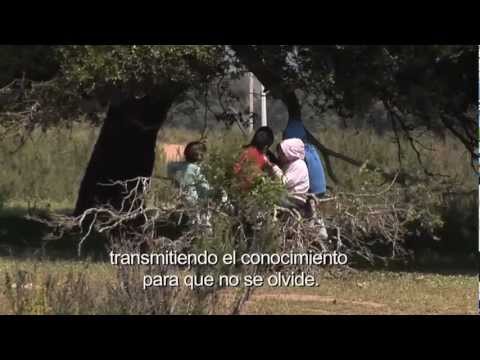
Watch this video on YouTube
Kumiai (Kumeyaay) myth of the divine snake, Maijaawe, with Gregorio Montes, by the Instituto Nacional de Antrolopogia e Historia de Mexico (INAH) (In Spanish and Kumiai)
During the visit to the mountain with the BLM personnel, the elders were asked why this particular mountain was sacred to Maayhaay, God, and was the home of his “prophet” Kuuchamaa. It was pointed out to them that other nearby peaks were actually higher. The elders responded that though they had asked, they had never been told the reason why this mountain was the most sacred. Later, off the mountain, I remembered that Spanish records had named a meadow to the west, near the coast as MuUehuu (Milejo). or “meadow at the base of the nostrils.” In the past, west of the meadow was a narrow, long north-south bay with a sand bar on the west or seaward side, known as the “mouth,” Rising steeply east of the meadow is a narrow, high mountain ridge, Otay Mountain, running eastward and dropping off steeply on each side to a river. This mountain was called “the nose,” Huu in Kumeyaay. I realized that the sacred mountain, Kuuchamaa, is the next mountain inland and that it is more or less at right angles to the “nose” with a deep valley on each side just west of its major heights, and that the spring called the “Tears of God” is on the southwest side leading down into the valley on that side. Imagining oneself high above this area looking down, one can conceptualize a face represented by these mountains with Tecate Peak, or Kuuchamaa, as the forehead, containing the brain, and, to the Kumeyaay, the place of power as well as knowledge. Thus God had created this special location as the home for his spirit. When asking the elders about this relationship of MuUehuu and Huu. the nose, to Kuucliatnaa, they replied, “We did not have to tell you, IT came to you so you have the right to know.”
As a result of the various discussions with and the questions asked by both the BLM and by archaeologists working on various environmental projects in recent years, the elders then asked me to publish the whole story in order that the literature should correctly describe their religion and religious beliefs. They did not like to be dismissed as “primitive and lacking higher mystical and abstract concepts,” They all admitted, however, that they were giving only the barest outlines of their religion because none of them had been initiated as a shaman. They were all individuals who, in the past, would have been trained for the positions of either kuseyaay (shaman), kwaaypaay (captain), or kuchat kwatay (big leader). Thus each knew some of the aspects of the religion and they worked together, first for the purpose of saving Kuuchamaa as the most sacred Kumeyaay place, and second to correct the description of their religion in the anthropological literature.
SUMMARY
While over the years I have been able to reconstruct a few portions of the Kumeyaay religious beliefs, the occasion for discussing my fragmentary reconstruction had not occurred. To discuss these matters under ordinary circumstances would be to cause someone’s death. Thus, passage of the National Environmental Policy Act and the Native American Religious Freedom Act, which provided the opportunity to protect the sacred mountain, Kuuchamaa, presented the opportunity to develop a more complete and correct understanding of the moralistic and mystical philosophy of the Kumeyaay religion. Further, the Kumeyaay elders, having become aware of the published descriptions of their society and their religion and desiring that more correct information be presented, have asked that this material be published.
Florence Connolly Shipek (1918-2003), U.S. anthropologist and ethnohistorian, specializes in the Indians of southern and Baja California. She published Pushed into the Rocks (1987), “Lower California Frontier -1870,” Baja California Travel Series #2 (1969) and The Autobiography of Delfina Cuero, as told to Florence Shipek, Baja California Travel Series #12 (1991). Mrs. Shipek had both a Bachelor of Arts degree and a Master of Arts degree from the University of Arizona, and a PhD from the University of Hawaii.
NOTES
3. The orthography used here is that of Couro and Hutchinson (1973) developed for Northern Kumeyaay bands. However, the speakers in this case were all Southern Kumeyaay, using southern dialects-that of the Campo / Cuyapaipe / New River bands and their pronunciation is followed here.
4. Due to the rarity of this flower it was requested that public identification be withheld.
5. In discussing the Sales work, his rendering of Kumeyaay words is used.
REFERENCES
Bean, Lowell J, 1972 Mukat’s People. Berkeley and Los Angeles: University of Calitornia Press.
Boscana, Fr. Geronimo, 1933 Chinigchinich. Revised and Annotated Version of Alfred Robinson’s
Translation of Father Geronimo Boscana’s Historical Account of the Beliefs, Usages, Customs, and Extravagancies of the Indians of the Mission of San Juan Capistrano Called the Acagechemen Tribe, P. T. Ilanna, ed. Santa Ana: Fine Arts Press.
Couro, Ted, and Christina Hutchison, 1973 Dictionary of Mesa Grande Diegueno. Banning: Malki Museum Press.
Updated 27 March 2024



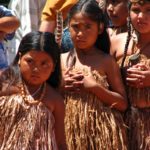
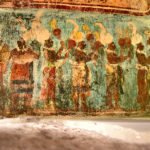
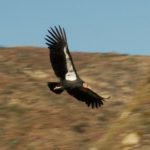
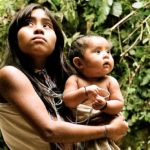






Pingback: Eye of God: Big Bear's Sacred Site of Creation | WilderUtopia.com
Pingback: Corazon Vaquero: Last of the Californio Cowboys of Baja California | WilderUtopia.com
Pingback: Postcommodity's 'Repellent Fence' Spans the U.S. Border | WilderUtopia.com
Pingback: Kumeyaay People: Traditions Survive in Baja California
Pingback: Baja California: An “Earthly Paradise” in the Desert
Pingback: Indigenous Regeneration: Remembering the Past to Inspire the Future
Pingback: Life Over Lithium: Protecting the Sacred Site Peehee Mu’huh (Thacker Pass)
Pingback: Native Wisdom: The Kumeyaay Way of Life - WilderUtopia